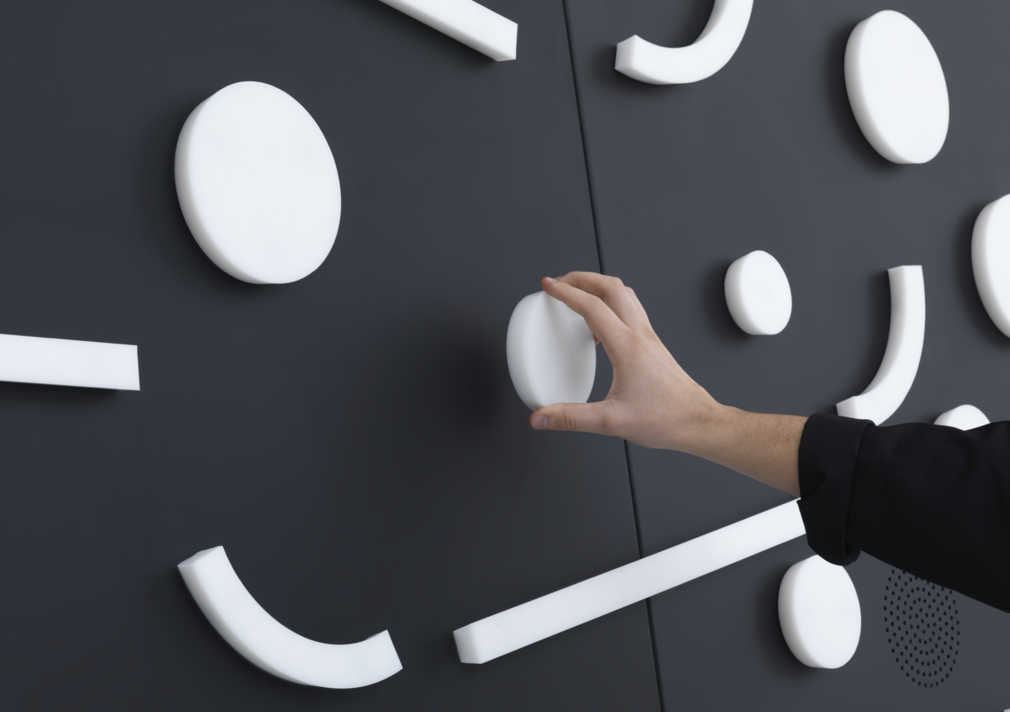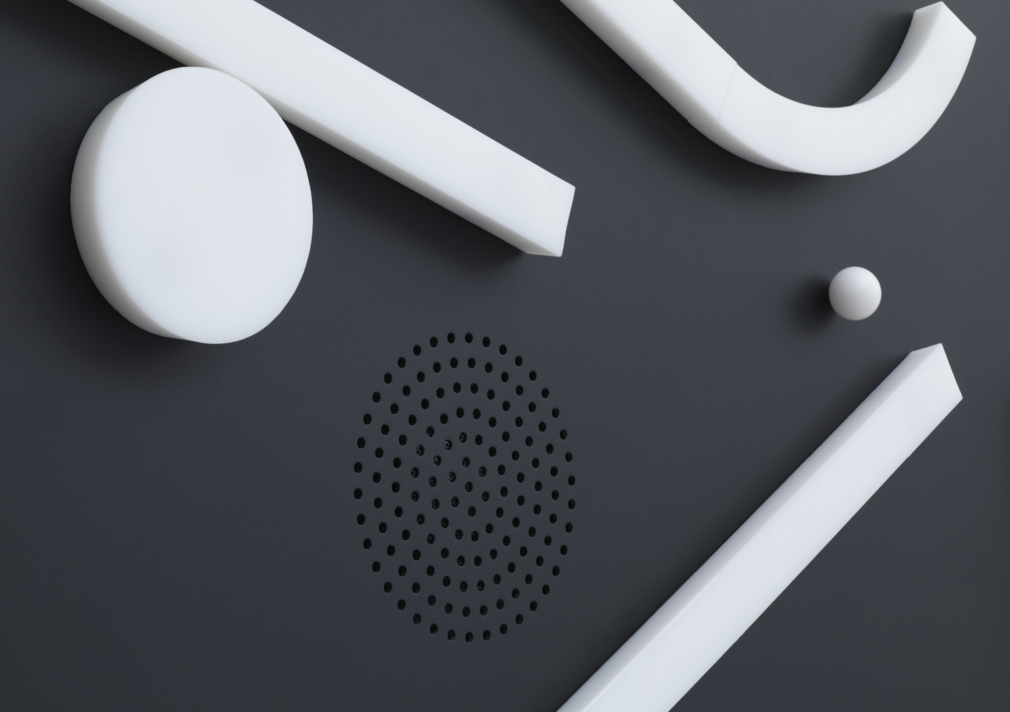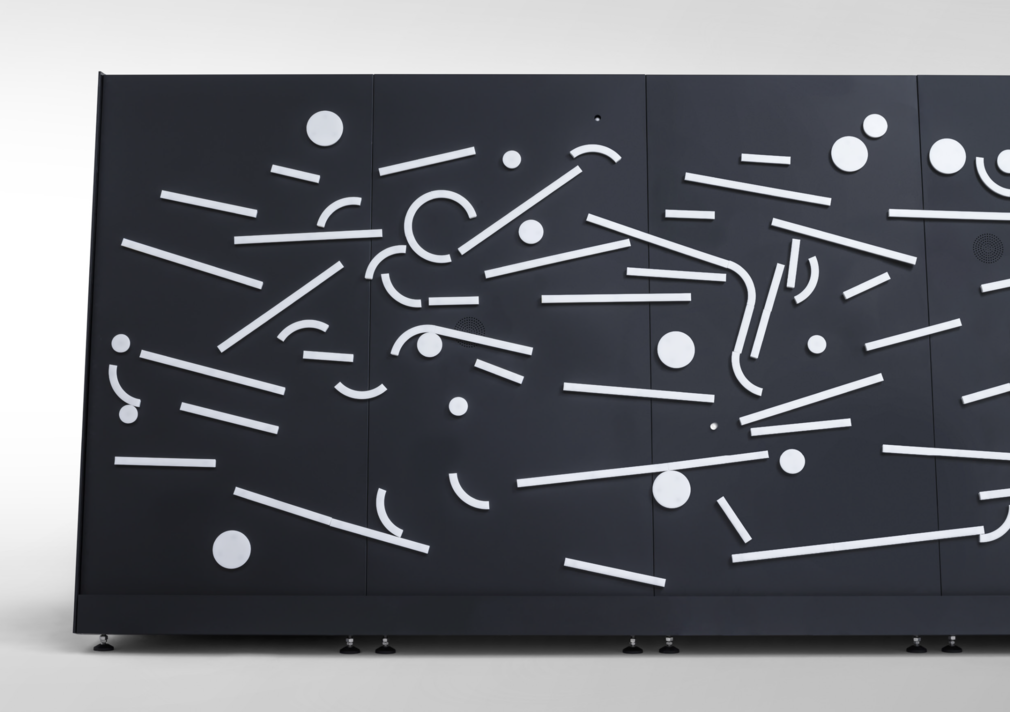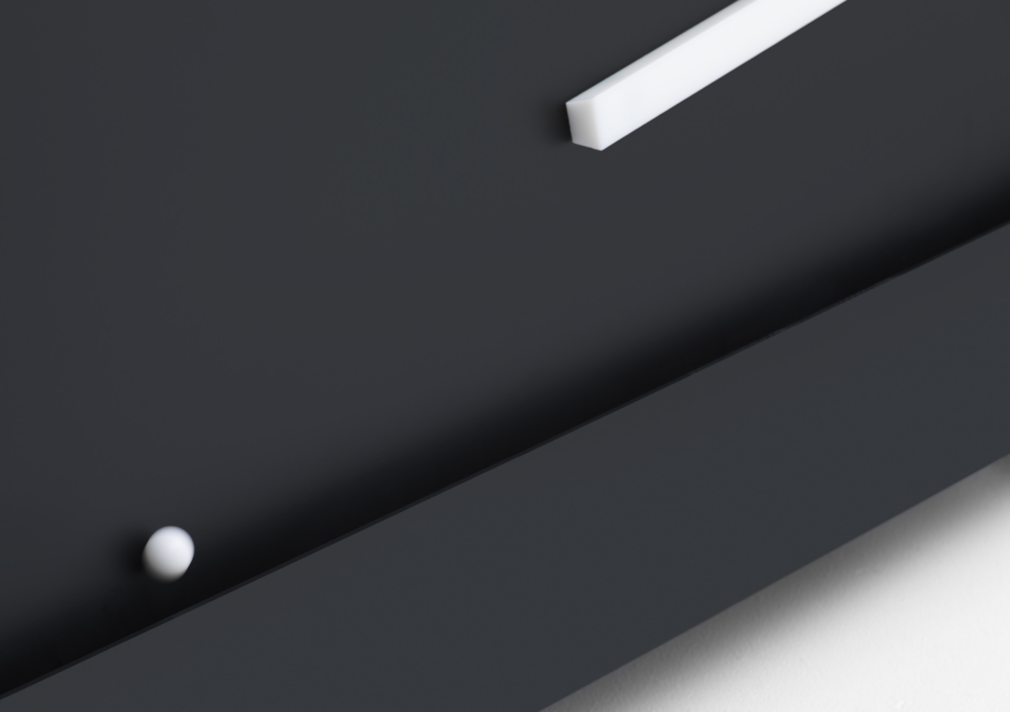POP Marbles, designed by Alt Group, is the twenty-fourth project in Auckland Council’s playful POP arts programme. The black-and-white marble run is an endlessly changeable visual and aural toy built at city scale. For adults and children alike, the huge wall prompts wonder, surprise and laughter wherever it goes.
Purple Pin Case Study — Graphic
Alt Group
POP Marble Run
Background



POP’s stated mission is to “create happenings, things, spectacles, ideas, performances and experiences across Auckland. POP exists to make fun, unite strangers, fuse creativity and create an instant community on every street corner.” Designed to activate public spaces in the city, POP Marbles attracted more than 10,500 participants over 10 days at Wynyard Quarter last July, its first public outing.
Alt Group chose the ubiquitous childhood toy for its wide reach – an idea everyone understands. Familiarity lowers the barriers to participation, because we all know how to play with a marble run. It requires no instructions and it has no age limits. But it’s also not your average marble run. When people start playing with it, its second dimension – sound – is activated, and the toy transforms into a large musical instrument.
Double-sided and eight metres long, the steel wall features hundreds of moveable white blocks, arcs, discs and lines of different sizes – a magnetic kit of parts. They can be arranged and customised every which way. As marbles traverse the shapes and drop down sections of the wall, they trigger a spectrum of electronic sounds created by local musician SJD. “Each run is not only unique from a visual perspective,” says creative director Dean Poole, “but it also creates a one-off sound composition. The resulting arrangement is recorded as a visual score by the blocks, like the notes on a music sheet.”
“Each run is not only unique from a visual perspective,” says creative director Dean Poole, “but it also creates a one-off sound composition.
The wall is designed as a social device that brings people together to co-create and interact while playing with this charming reinvention. “Design meets art, meets product and spatial in some ground-breaking work,” noted the awards judges. “Many projects in this category saw design as an extension of an actual experience.” In this case, the experience is participatory art. As people alter and engage with the work, they complete it – an approach handed down from 1960s art movements such as Fluxus and the Situationists.



Its sound design draws on the idea of ‘indeterminacy’ – a concept pioneered by avant-garde American composer John Cage in the 1950s – whereby improvisation and chance allow a music piece to be composed in multiple and random ways. Just as the magnetic blocks produce random visual shapes, the triggered sounds produce random compositions.
“Design meets art, meets product and spatial in some ground-breaking work,” noted the awards judges.
Using a strong theoretical framework, Alt Group has been able to bring different elements into conversation. Apparent haphazard visual patterns are made coherent through a family of shapes and consistent colour. And like the pentatonic scale in music, harmony is created by a family of sounds. The result is pleasing to the eye and the ear. You can’t really make a bad composition on POP Marbles.
All the technology is hidden inside the wall. Speakers are concealed, and marbles are collected in a tray to be automatically lifted back to the top. For portability, the structure breaks down into smaller sections so Council staff can easily move it to storage facilities and other host destinations around the city.
POP Marbles’ success is in how it draws people in, reaching Aucklanders who might never visit a gallery. The creative strategy was to invite hands-on participation by everyone. “What I get out of it the most is how people gift their time to participate,” comments Poole. “The reward is the fun and contribution to its making.”
—Andrea Stevens
www.folio.nz